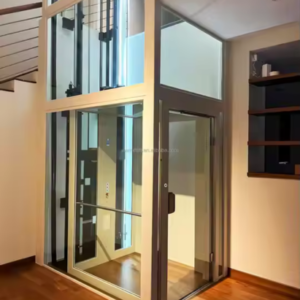Elevator Lift Cost
The cost of an elevator lift depends on various factors, including type, size, installation requirements, and advanced features. Residential lifts may cost less than commercial or industrial ones due to simpler designs. Customization, safety enhancements, and maintenance also impact pricing, making it essential to choose a lift that fits your budget and needs.
Product Description
Elevator Lift Cost – Understanding Pricing and Factors
The cost of an elevator lift varies depending on several key factors, including the type of lift, installation complexity, customization options, and maintenance requirements. Whether for residential, commercial, or industrial use, elevator lifts provide convenience, accessibility, and efficiency. Understanding the pricing structure helps in making an informed decision when investing in an elevator lift.
Factors Affecting Elevator Lift Cost
One of the primary factors influencing the cost of an elevator lift is its type. Residential elevators are generally more affordable compared to commercial and industrial lifts due to their smaller size and simpler functionality. Hydraulic elevators, traction elevators, pneumatic vacuum lifts, and machine-room-less (MRL) elevators each come with different pricing structures based on their mechanisms and technology.
The number of floors an elevator needs to serve also impacts its price. A lift that operates between two floors will be significantly cheaper than one designed to reach multiple levels. Higher-rise buildings require more advanced elevator systems with stronger motors, larger shafts, and enhanced safety features, all of which contribute to increased costs.
Installation and Customization Costs
Installation plays a major role in the total cost of an elevator lift. Retrofitting an elevator into an existing building can be more expensive than integrating one into new construction. Structural modifications, electrical work, and additional space considerations can lead to increased installation expenses. On the other hand, installing an elevator in a newly built structure allows for smoother integration, often reducing costs.
Customization is another aspect that affects the price of an elevator lift. Custom interior finishes, advanced control systems, glass panels, and high-end materials such as stainless steel or wood detailing can significantly increase costs. Some homeowners or businesses prefer premium designs that match their aesthetic preferences, adding to the final price.
Maintenance and Long-Term Expenses
Beyond the initial installation cost, ongoing maintenance is necessary to ensure the longevity and efficiency of an elevator lift. Regular inspections, servicing, and part replacements can add to the overall expenses over time. Residential elevators typically require less maintenance compared to commercial and industrial lifts, which experience higher usage and demand more frequent servicing.
Elevator manufacturers offer maintenance plans that vary in cost depending on the level of service required. Choosing a reliable service provider ensures the elevator remains in optimal working condition while minimizing unexpected repair expenses.













Reviews
There are no reviews yet.